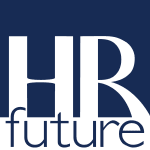Remote work is no longer just a temporary solution—it has evolved into a core strategy that is redefining how businesses operate. By 2025, advancements in technology, shifts in workforce demographics, and innovative business models are converging to create a workplace that is more flexible, dynamic, and globally integrated. This transformation is not only changing how we work but also how we recruit, manage, and collaborate across borders.
The Evolution of Remote Work
The journey toward a remote-first future began as a response to unforeseen global challenges. Over time, organizations discovered that remote work offered benefits that extended far beyond crisis management.
From Crisis Response to Strategic Adoption
Early experiments with remote work were born out of necessity. Companies quickly learned that they could maintain, and in many cases enhance, productivity when employees were given the freedom to work from home. Investments in cloud computing, high-speed internet, and collaboration software accelerated this transition. As a result, businesses began to see remote work as a strategic asset rather than a short-term fix, enabling them to access a broader talent pool and reduce operational costs.
Redefining Workplace Culture
As the reliance on digital tools increased, traditional office environments began to lose their central role. Companies are now building a digital culture that emphasizes transparency, trust, and flexibility. Virtual meeting platforms and asynchronous communication tools have become essential, fostering an environment where employees can collaborate effectively regardless of their location. This new culture is reshaping relationships between colleagues and redefining the traditional hierarchy in favor of more agile, results-oriented teams.
Key Trends Shaping Remote Work in 2025
Looking ahead, several emerging trends are set to shape the future of remote work. These trends reflect both technological advancements and changes in how work is organized and valued.
Technological Innovations and Virtual Collaboration
Rapid technological advancements are at the heart of the remote work revolution. Tools incorporating virtual reality (VR) and augmented reality (AR) are beginning to offer immersive experiences that mimic in-person interactions. Enhanced virtual collaboration platforms now allow teams to work together seamlessly, regardless of distance.
The Rise of Hybrid Work Models
The future of work is likely to be a blend of remote and in-office experiences. Hybrid work models offer the benefits of both worlds: the flexibility and autonomy of remote work, combined with the collaborative energy of face-to-face interactions. In these models, employees can work from home while still enjoying the opportunity to meet and collaborate with colleagues periodically in a physical setting.
This approach caters to various work styles and personal needs, helping organizations maintain productivity while fostering a strong team culture. It also allows businesses to optimize their real estate needs, transforming traditional office spaces into hubs for creative collaboration rather than daily operations.
HR and Remote Work Management
The shift to remote work has profound implications for human resource practices. HR departments are rethinking every aspect of talent management to align with the demands of a distributed workforce.
Rethinking Recruitment and Onboarding
Remote work has removed geographical barriers, enabling companies to recruit the best talent regardless of location. Virtual interviews and digital onboarding processes are now standard practice, ensuring that new hires integrate seamlessly into the organization. Customized onboarding programs that leverage online training modules and virtual mentorship are essential for preparing employees to excel in a digital work environment.
This shift requires HR professionals to be more agile and tech-savvy, using data-driven strategies to identify and nurture talent. The emphasis is on skills and potential rather than proximity, leading to a more diverse and inclusive workforce.
With the rise of remote hiring, resume screening has become an essential step in identifying top candidates efficiently. AI-powered applicant tracking systems (ATS) are being widely adopted to scan resumes for key skills, experience, and qualifications, helping HR teams manage large pools of applicants more effectively. These tools streamline the hiring process by filtering out unqualified candidates and ensuring that the best talent moves forward in the recruitment pipeline. By integrating intelligent resume screening with structured virtual interviews, companies can enhance their hiring accuracy and build high-performing remote teams.
Fostering Digital Engagement and Collaboration
Maintaining strong employee engagement in a remote setting demands innovative approaches. Organizations are creating virtual communities through regular online team-building activities, interactive webinars, and informal virtual meetups. These initiatives help bridge the gap created by physical distance and foster a sense of belonging among remote employees.
Transparent communication is key. Managers are encouraged to use digital tools to share updates, solicit feedback, and celebrate team achievements. This proactive engagement not only boosts morale but also drives productivity by ensuring that every team member feels connected and valued.
As remote work continues to grow, organizations are increasingly recognizing the importance of adapting employee training programs to ensure that remote teams have the tools and skills they need to thrive. According to a recent article from HR Future, the rise in remote work is shifting the way training is delivered, with a focus on flexible, tech-driven solutions that support diverse learning styles and schedules. Virtual workshops, e-learning modules, and real-time digital mentorship are becoming essential components of modern training strategies, enabling companies to provide targeted support for remote compliance jobs and other specialized remote positions, ensuring compliance and continuous professional development across distributed teams. for 22 seconds
In today’s rapidly evolving work landscape, innovative approaches to workforce development are essential for keeping pace with digital transformation; as noted by HR Future, the rise of remote work is driving companies to adopt robust employee training and development strategies that leverage virtual platforms, interactive modules, and real-time feedback to ensure continuous upskilling, ultimately enhancing employee performance and organizational resilience.
Security and Regulatory Compliance
As businesses expand their remote operations, the security of digital systems has become paramount. Companies face increasing challenges in safeguarding data and ensuring regulatory compliance in a decentralized work environment. Specialized roles, such as those in remote compliance jobs, have emerged as critical to overseeing security protocols and ensuring that remote work practices meet legal and industry standards. Organizations are investing in comprehensive cybersecurity measures, from encryption and multi-factor authentication to regular audits and employee training, to protect sensitive information and maintain trust in their digital operations.
Emerging Business Models and Innovation
The rise of remote work is spurring the development of new business models that capitalize on the flexibility and global reach of a distributed workforce.
Global Collaboration and Outsourcing
Remote work has dissolved the geographical boundaries that once limited collaboration. Companies are now partnering with international teams, bringing together diverse perspectives that drive innovation and creative problem solving. This global integration is not only enhancing product development and service delivery but is also fostering cultural exchange and mutual learning.
Outsourcing has become a key strategy in this environment. By engaging specialized remote teams, companies can accelerate projects and reduce overhead costs. The seamless integration of global talent allows businesses to remain competitive in a rapidly evolving market.
Redefining Productivity Metrics
In the era of remote work, traditional measures of productivity—such as hours spent in the office—are becoming obsolete. Organizations are shifting toward outcome-based evaluations that focus on the quality and impact of work. This results-oriented approach empowers employees to take ownership of their tasks and encourages innovation without the constraints of micromanagement.
Performance metrics now prioritize deliverables, efficiency, and creativity. Managers set clear goals and use digital tools to monitor progress, providing timely feedback that helps teams adjust strategies and maintain momentum. This focus on results not only improves productivity but also fosters a culture of accountability and continuous improvement.
Investing in Future-Ready Technologies
Forward-thinking companies are actively investing in technologies that will support the next generation of remote work. Artificial intelligence, machine learning, and automation are streamlining processes and enabling more informed decision-making. These investments are not only addressing current operational challenges but are also preparing organizations for future shifts in the digital landscape.
By embracing cutting-edge tools and platforms, businesses can remain agile and competitive. The integration of these technologies into everyday operations is setting the stage for a more efficient, responsive, and innovative work environment—a future where remote work is not just a necessity, but a strategic advantage.
Guest writer



























